31 day graph
Tide height at Key West, Florida: Jan 1-31 2009
From National Oceanic Survey of NOAA
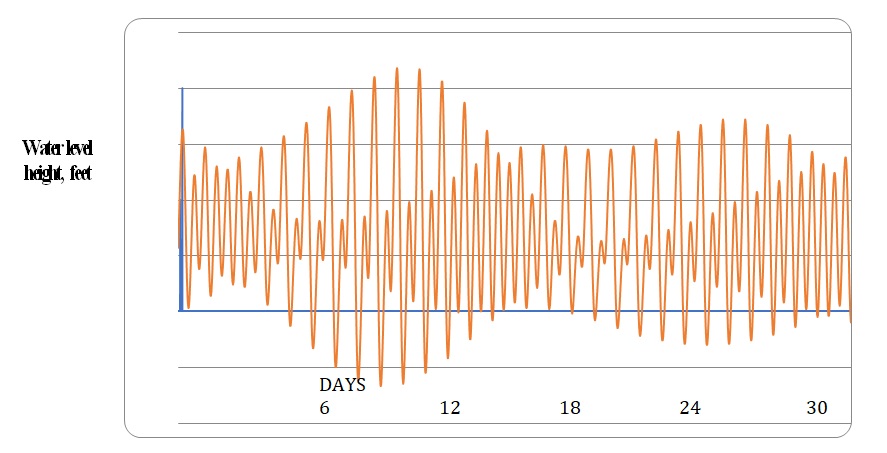
6 day graph
Tide height at Key West, Florida: Jan 10-15 2009
From National Oceanic Survey of NOAA

Data Source: (National Oceanic Survey of NOAA, 2009)
31 day graph
Tide height at New London, Connecticut: Jan 1-31 2009
From National Oceanic Survey of NOAA

5 day graph
Tide height at New London, Connecticut: Jan 6-10 2009
From National Oceanic Survey of NOAA
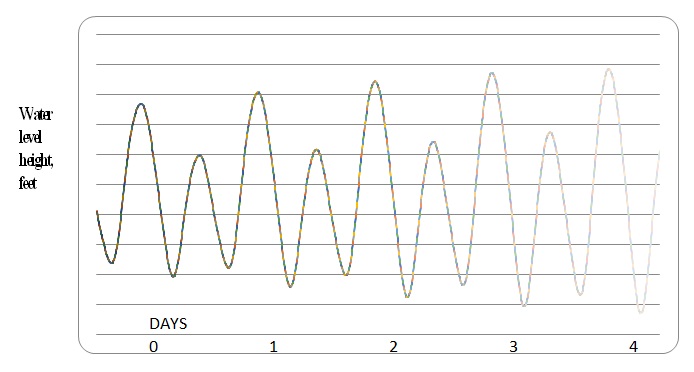
Data Source: (National Oceanic Survey of NOAA, 2009)
31 day graph
Tide height at Eagle Point, Texas: Jan 1-31 2009
From National Oceanic Survey of NOAA
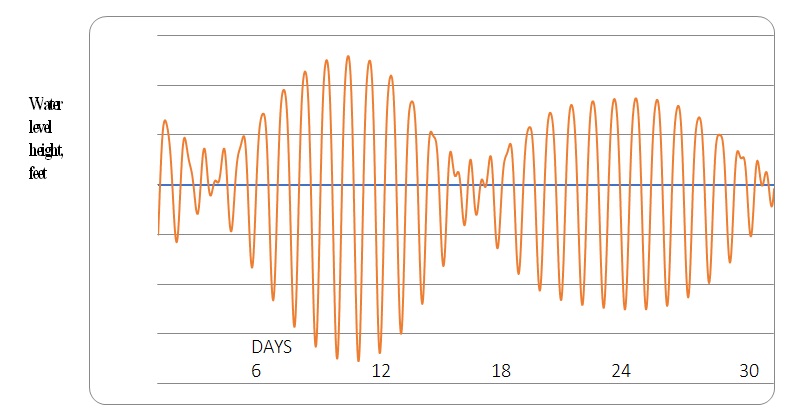
4 day graph
Tide height at Eagle Point, Texas: Jan 26-29 2009
From National Oceanic Survey of NOAA
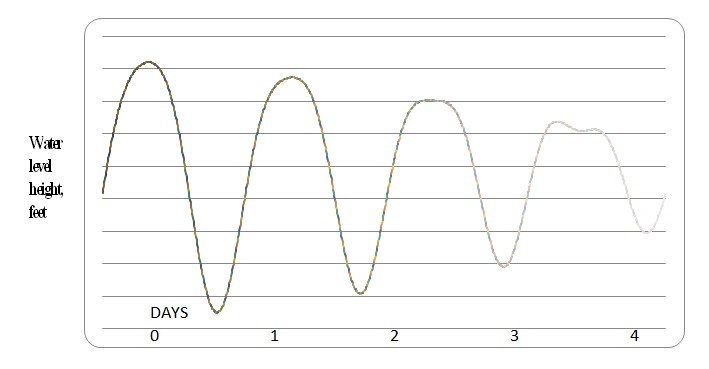
Data Source: (National Oceanic Survey of NOAA, 2009)
31 day graph
Tide height at Anchorage, Alaska: Jan 1-31 2009
From National Oceanic Survey of NOAA
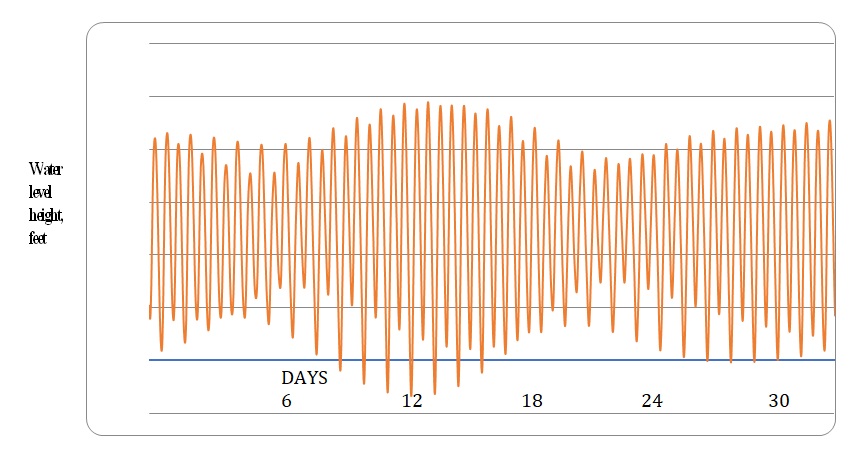
6 day graph
Tide height at Anchorage, Alaska: Jan 1-6 2009
From National Oceanic Survey of NOAA
Data Source: (National Oceanic Survey of NOAA, 2009)
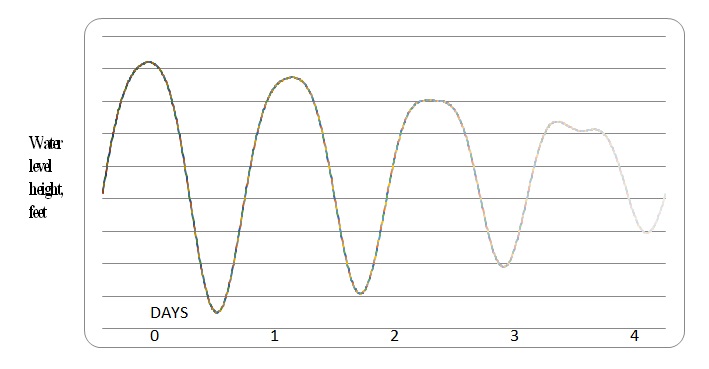
Comparison and Contrast in Semidiurnal, Diurnal, and Mixed Tides
Phase of the moon and the position of the moon in the space in comparison to the earth are some factors that influence tides. The highness or lowness of the tide will depend on the moon’s position in relation to equator (Elise, Anna, & Nick, 2011). Semi-diurnal, diurnal, or mixed tides are characterized by tidal pattern widely distributed in a certain geographical area (Ross, 1995).
Semidiurnal tides express high and low tides in doubles on daily basis at a uniform interval. The succeeding tide variation to previous is unnoticeable. It is secondly ranked in terms of occurrence from the mixed tides (Princeton, 2011).
Diurnal tides have single low and high tide on daily basis and the water levels are not much altered in the succeeding tide. In most cases, this kind of tide is not common.
Mixed tides demonstrate much difference in height of preceding low and high waters. On daily basis, there are double high and low water. There.are high similarities between the mixed and diurnal in some instances. Comparing to the three types of tides, mixed tides are the commonly known (Integrated publishing, 2011).
References
Elise, L., Anna, B., & Nick, I. (2011). tides-diurnal, semi-diurnal, mixed. Web.
Integrated publishing. (2011). Types of tides and reference planes. Web.
National Oceanic Survey of NOAA. (2009). Tide data. Web.
Princeton. (2011). Water on earth. Web.
Ross, D. A. (1995). Introduction to Oceanography. New York, NY: HarperCollins.